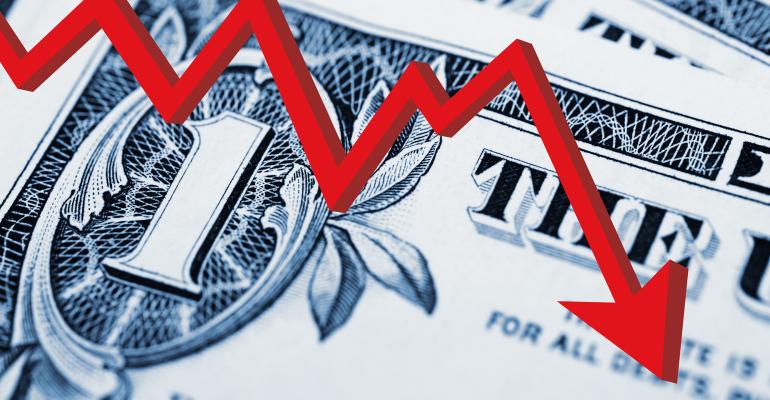On my recent investors call, a question was raised about the downward shift in the demand for the U.S. dollar, especially the petrodollar, and the potential effects on real estate values.
While the U.S. currency is the most reliable globally and represents 90% of the world transaction volume, by comparison, the Chinese yuan currency represents nearly 1% of global transactions and the British pound, the euro and Japanese yen combined represent the remaining 9%. Yet the fact is that the U.S. dollar dropped by as much as 15% compared to foreign currencies and precious metals. Namely, gold has jumped to $22,000 per pound, representing a 20% increase.
Today, more than ever before, we must understand the macro global environment and its potential impacts on the local economy, and while I can argue that a drop in dollar value can have both positive and negative impacts on real estate, the proper answer requires a more careful examination of the asset class, its underlying mortgage and the market fundamentals where the asset is located.
To say it differently, a well-capitalized, well-positioned asset in a major gateway city will hold and even see an increase in value because foreign demand is incentivized by the discount arbitrage caused by the low currency exchange rate.
However, this is never clear cut and properties will suffer from the expansion of cap rates and higher cost of capital. Let’s look at a few examples.
When the dollar loses value, inflation often rises because the prices of goods and services increase. Historically, real estate has served as a hedge against inflation, as property values tend to increase with or even outpace inflation. This is because the cost of construction materials and labor goes up, making it more expensive to build new properties. As a result, the value of existing properties may also rise to keep up with the increasing costs. We have seen it across the board, mainly in multifamily properties that we are developing in multiple markets. The rise in inflation has increased rents and, in turn, the value of our assets. Of course, the cost to build and the carry interest rates have increased as well, but the positive impact we’re experiencing far exceeds the negative (increase in cost vs. increase in property value). A good example is our 600 Dania Beach Boulevard project. We have seen construction cost rise by as much as 17% factoring in additional time and reserves for interest rate. To set that, rents have gone up by 34%, and the value of the asset increased from $105 million to $140 million in a short period of time, while we project cap rate expansion at the exit by 20 basis points to account for the higher cost of capital for a potential buyer.
Another factor we are evaluating is the growing demand for foreign capital. Nearly 80% of the funds Astor Realty Capital deploys are foreign and currency fluctuations are always on our minds. A weaker dollar makes U.S. real estate more attractive to foreign investors as their purchasing power increases, creating increased demand that may result in higher real estate prices, particularly in prime locations and popular markets.
A falling dollar may lead to higher interest rates to counteract inflation as central banks try to stabilize the economy. Higher interest rates can, in turn, lead to higher mortgage rates. This might decrease the demand for real estate, lead to a slowdown in the growth of real estate values, or, in some cases, a decrease in property values, depending on the supply and demand dynamics at play. Long-term, fixed-rate mortgages are a safe hedge. However, the vast majority of our projects are financed with short-term debt that’s exposed to fluctuations. To reduce the risk, we pay additional sums to cap rates at reasonable levels. In Dallas we locked in a 3.6% interest rate loan while we bought a 5.75% rate lock to protect our asset from wild interest rate hikes. This happened in the first quarter of 2022. Had we not bought the rate cap, the asset would have been negatively affected as the increase of SOFR since has gone up by 400 basis points and our ability to service the debt would have been impaired.
Ultimately, the impact of a falling dollar on real estate values depends significantly on local market conditions and the overall economic situation. Astor invests in the top 12 MSAs, with a heavy concentration in Miami and South Florida, Dallas and greater Texas, Brooklyn and the suburbs of New York City. These locations are fundamentally strong due to factors such as employment, local industries and population growth that will have a more substantial impact on real estate values than currency fluctuations.
In conclusion, a drop in the value of the dollar can have both positive and negative effects on real estate values. While it may lead to increased demand from foreign investors and serve as a hedge against inflation, it can also result in higher interest rates affecting affordability and demand. Local market conditions and economic factors will ultimately be critical determinants of how your real estate value is affected by fluctuations in the dollar's value.
Joe Berko is founder and CEO of Astor Realty Capital, a private equity real estate investment firm.





